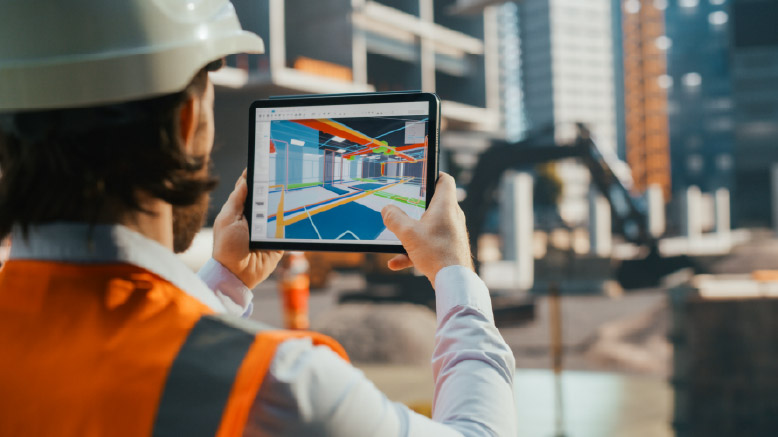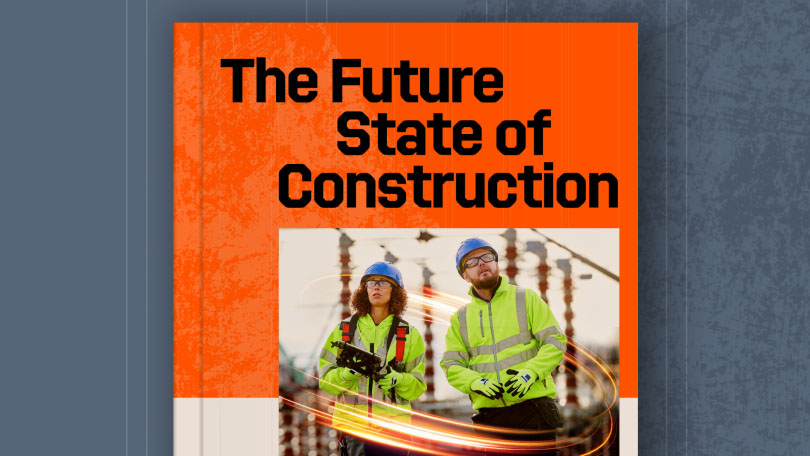— 5 min read
Facilitating Effective Communication and Collaboration Across Construction Teams
Last Updated Oct 23, 2025
Zoe Mullan
27 articles
Zoe Mullan is an experienced content writer and editor with a background in marketing and communications in the e-learning sector. Zoe holds an MA in English Literature and History from the University of Glasgow and a PGDip in Journalism from the University of Strathclyde and lives in Northern Ireland.
Last Updated Oct 23, 2025

In construction, communication is more than a nice-to-have - it’s the scaffolding that holds everything together. Without it, even the most well-designed projects can wobble under the weight of confusion, delays, and costly mistakes. Clear, consistent communication empowers teams to build structures and, at the same time, cultivate trust, safety, and success.
Table of contents
Why Communication is the Real Foundation
Good communication has a wide array of positive effects on projects and the business, including:
- Increased safety and compliance with regulations such as the CDM 2015
- Reduced errors and less rework
- Enhanced team coordination and productivity
- Better time and budget management
- Positive morale and culture on site
In this article, we’ll look at why communication breaks down, what happens when it does and how to encourage good communication.
When Communication Breaks Down
Unfortunately, many people learn about the value of good communication in situations where communication is missing. Poor communication on a construction site can be fatal because heavy machines and high work leave no room for mistakes. There is little room for error in situations involving heavy equipment and working at height. Any communication issue in this environment can, devastatingly, be fatal.
Health and safety are a top priority when it comes to construction, but they’re not the only areas that suffer when people aren’t communicating effectively.
Breakdowns in sharing information can also have significant commercial impacts, and these can be difficult to recover from on a project where margins are already tight. And for projects that are high profile such as sporting arenas or major infrastructure — issues caused by poor communication can face public scrutiny and result in reputational damage.
Poor document management systems and inconsistent version control can create bottlenecks. When people don’t know where to find the latest information—or aren’t sure it’s accurate, they stop trusting the system.
Why Communication Breaks Down
How construction companies share information sets the precedent for how effective their communication systems are. There needs to be a standardised process for both sharing digital documentations such as drawings and variation orders, and for how instructions are given verbally. Too often, there isn’t a rigorous process for these tasks, which can lead to fragmented systems around how we share information.
Where and how information is stored is often a trigger for poor communication. When there isn’t a clear or well-understood document management system, it can become difficult to correctly share the right information with the employees who need it. Two common causes of information bottlenecks are complex filing systems and a lack of consistent version control.
I’ve had projects where some information would be sent on email, sometimes I’d get a paper copy, then a memo, and the continuity of a single source of truth would get lost. We lacked the regimented systems that stop this.
Raynee De Zoysa
Project Management and Working Winning Professional
Leadership: The Blueprint for Better Communication
Communication is a behaviour, not process. And like all behaviours, it starts at the top. Leaders must model the standards they expect whether that’s clarity in instructions or respect in tone.
As well as modelling good communication, you can show teams the kind of behaviour that isn’t going to be tolerated — such as bad language, inappropriate jokes and disrespectful verbal conduct — by not engaging in it.
I think you've got to lead by example and call out bad or disrespectful language, because
that sends the signal to others that this is not how we behave. When you don’t swear,
people are likely to mirror you and be more respectful in return.
Raynee De Zoysa
Project Management and Working Winning Professional
The Construction Project Manager: The Glue Between Office and Site
The construction project manager (CPM) is often seen as the glue between the office and the site, in charge of the interconnectivity between the two. As the CPM spends time on site with the tradespeople carrying out project work, they are in a unique position to be able to motivate the team while working with them and giving them instructions. This helps teams collaborate well and see everyone on site as one big team, not separate, isolated gangs.
Creating good morale and a positive culture is a key part of an effective CPM’s job, and if they do this well, they are also encouraging better communication between workers on site. This has a cascade of positive effects on safety, timeliness and sticking to budgets.
There’s something about that real team spirit, particularly on site, that makes it so much
easier to get people to talk to each other. You go beyond seeing people as colleagues to
seeing them as people that you care about, especially in terms of safety. This alone
motivates people to communicate better.
Raynee De Zoysa
Project Management and Working Winning Professional
Daily site meetings are golden opportunities. They’re not just about schedules - they’re about connection. Asking, “How can I help you today?” opens the door to real insight and builds trust.
Technology Enhances Communication
More and more technology is being used on site today, from robotics to automation to modern methods of construction. However, sometimes the simplest technology can make the most impact. Everyone has a mobile phone these days, with apps such as WhatsApp familiarising people with taking voice recordings, or ‘voice notes’.
There is a real opportunity to use voice notes to make the recording and sharing of information even easier, especially on site. They’re quick, accessible, and inclusive — especially for team members who speak English as a second language, have lower literacy levels, or are neurodiverse.
Generative AI (GenAI) can take this further. It can transcribe voice notes, summarise conversations, and even answer questions based on site data.
Final Thoughts
Construction is about more than steel and concrete. It’s about people. And people thrive when they feel heard, respected, and connected. Communication isn’t another a tool - it’s the foundation of every successful build.
If we want to build structures that last, we must first build relationships that endure.
Raynee De Zoysa
Project Management and Working Winning Professional
Categories:
Written by
Reviewed by
Zoe Mullan
27 articles
Zoe Mullan is an experienced content writer and editor with a background in marketing and communications in the e-learning sector. Zoe holds an MA in English Literature and History from the University of Glasgow and a PGDip in Journalism from the University of Strathclyde and lives in Northern Ireland.
View profileExplore more helpful resources

Control the Chaos: Standardising Document Workflows in Construction Projects
Document control and implementation play a central role in managing risk, meeting deadlines, and delivering projects to spec. As builds become more complex and teams increasingly disperse, the volume and...

Cost-Plus Construction Contracts in the UK
A construction cost-plus contract – sometimes called a cost-reimbursable or prime cost contract – reimburses all project costs and adds a fee to cover the contractor’s overhead and profit. UK...

Digital Construction Technology for Whole-Life Value
For decades, the construction industry has kept a narrow focus on capital cost — the one-time, upfront costs of a construction project. While in the short term this seems like...

UK Construction Progress Reports: Tools for Smarter Site Management
Construction progress reports track completed work, on site issues, costs, and safety so UK project teams can demonstrate progress, secure payments, and stay on programme. Accurate progress data is essential...
